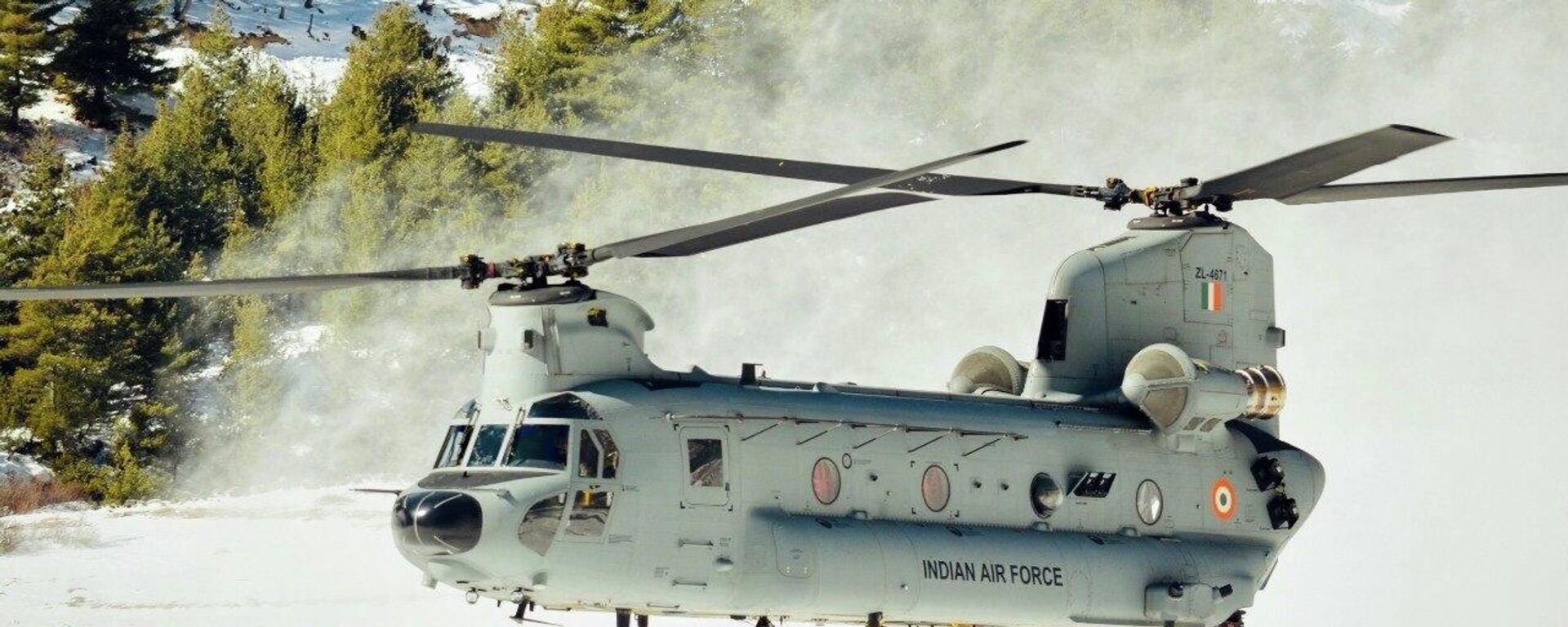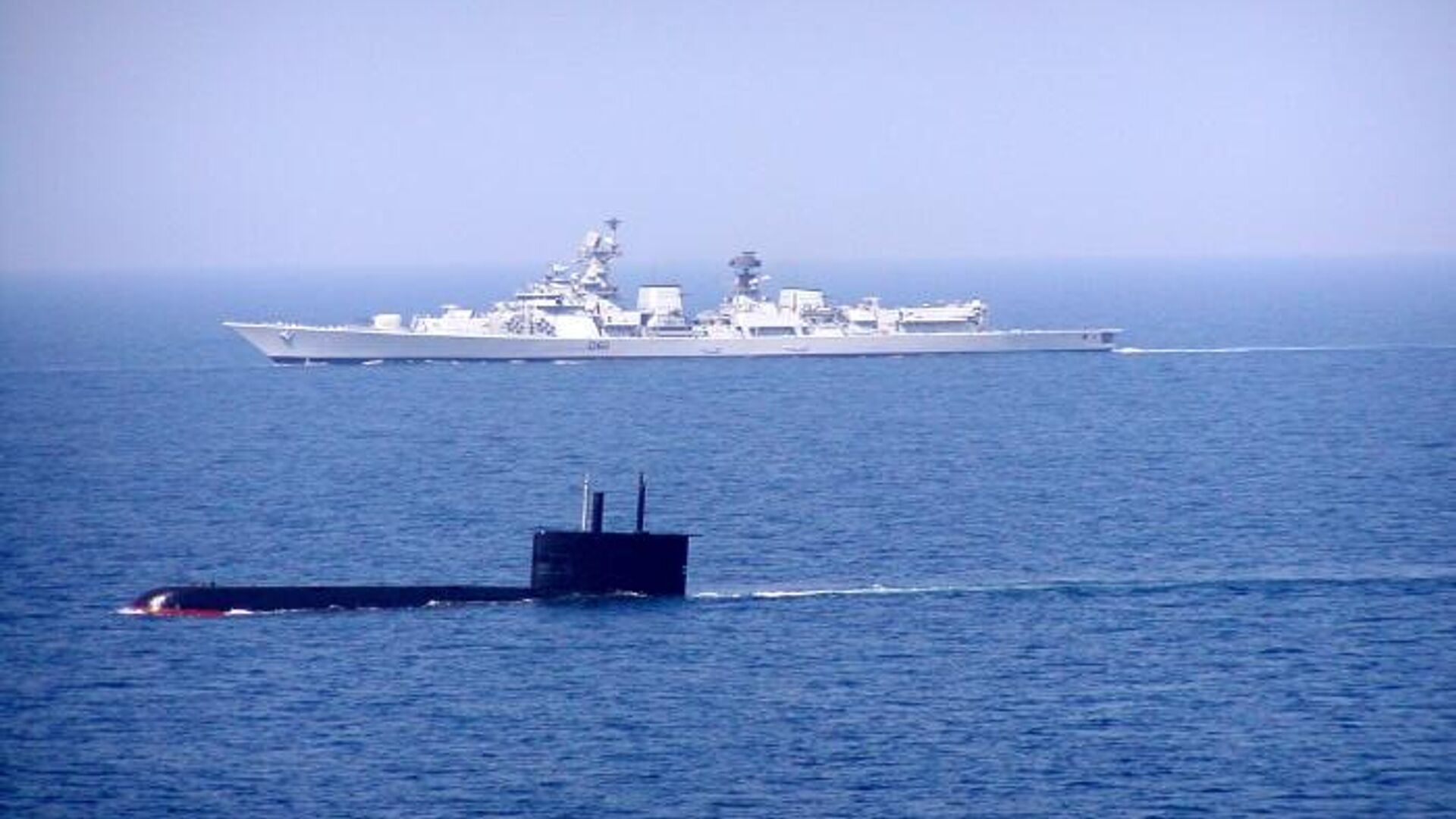https://sputnikglobe.com/20211203/india-deployed-warships-at-forward-positions-in-ior-during-border-clashes-with-china-navy-chief-1091226577.html
India Deployed Warships at Forward Positions in IOR During Border Clashes With China: Navy Chief
India Deployed Warships at Forward Positions in IOR During Border Clashes With China: Navy Chief
Sputnik International
The border stand-off between India and China started over infrastructure works in the western sector of Line of Actual Control (LAC) in April 2020. On... 03.12.2021, Sputnik International
2021-12-03T14:53+0000
2021-12-03T14:53+0000
2022-07-19T10:40+0000
indian navy
indian ocean
chinese people's liberation army (pla)
ladakh standoff
china
indian army
people's liberation army (pla) navy
https://cdn1.img.sputnikglobe.com/img/07e5/09/12/1089178676_0:4:700:398_1920x0_80_0_0_bbd6c5fd266905c750e5c96a2ecf8147.jpg
At the peak of the border stand-off with China, the Indian Navy deployed a range of warships at forward positions in the Indian Ocean Region to deter any collusive threats from China and Pakistan."When there was a problem at the northern borders, our ships that were deployed on missions were forward deployed, and other ships were ready," Indian Navy Chief, Admiral R Hari Kumar said on Friday.The admiral, who took charge of the Indian navy on 30 November, said that, on average, seven Chinese PLA Navy ships are present at any time in the Indian Ocean Region.Kumar also said the Indian Navy has a 10-year plan to have indigenous unmanned airborne, underwater and autonomous systems.The Navy chief has emphasised that India is not developing its capabilities with any particular country in mind - it is simply assessing its requirements."We have evolved from a 33-ship Navy to a potent, well-balanced, capable force. We don't look at capability development against any particular country; we develop capability depending on our maritime interests," the admiral replied when asked about the Indian Navy's assets when compared with those of China's People's Liberation Army-Navy.After achieving the first phase of disengagement along the LAC in February this year, troop withdrawal from forward areas was stalled as the two nuclear powers continue to accuse each other of encroachments in eastern Ladakh."You can't have a tense, high-friction border and great relations in all other parts of life. It doesn't work that way," Foreign Minister Jaishankar Subrahmanyam said on Thursday, during a summit organised by Indian media organisation, the Hindustan Times.The 13th round of talks at military commanders' level in October collapsed, with both sides issuing separate statements that publicly blamed the other for failing to reach any consensus.More than a year after a deadly clash in the Galwan Valley, in which 20 Indian soldiers and four PLA troops were killed, the agreement to de-escalate the tensions remains incomplete despite New Delhi and Beijing holding 13 rounds of military talks.
https://sputnikglobe.com/20211117/india-conducts-military-exercise-to-augment-winter-stocks-for-troops-along-china-border-1090798044.html
indian ocean
ladakh standoff
china
Sputnik International
feedback@sputniknews.com
+74956456601
MIA „Rosiya Segodnya“
2021
Rishikesh Kumar
https://cdn1.img.sputnikglobe.com/img/07e4/08/04/1080055820_0:0:388:389_100x100_80_0_0_40018ee210946d65d49ffba4f4c008e1.jpg
Rishikesh Kumar
https://cdn1.img.sputnikglobe.com/img/07e4/08/04/1080055820_0:0:388:389_100x100_80_0_0_40018ee210946d65d49ffba4f4c008e1.jpg
News
en_EN
Sputnik International
feedback@sputniknews.com
+74956456601
MIA „Rosiya Segodnya“
Sputnik International
feedback@sputniknews.com
+74956456601
MIA „Rosiya Segodnya“
Rishikesh Kumar
https://cdn1.img.sputnikglobe.com/img/07e4/08/04/1080055820_0:0:388:389_100x100_80_0_0_40018ee210946d65d49ffba4f4c008e1.jpg
indian navy, indian ocean, chinese people's liberation army (pla), ladakh standoff, china, indian army, people's liberation army (pla) navy
indian navy, indian ocean, chinese people's liberation army (pla), ladakh standoff, china, indian army, people's liberation army (pla) navy
India Deployed Warships at Forward Positions in IOR During Border Clashes With China: Navy Chief
14:53 GMT 03.12.2021 (Updated: 10:40 GMT 19.07.2022) The border stand-off between India and China started over infrastructure works in the western sector of Line of Actual Control (LAC) in April 2020. On Thursday, Indian Foreign Minister Jaishankar Subrahmanyam accused Beijing of violating "very, very clear commitments in two border agreements on not amassing forces" on the border.
At the peak of the border stand-off with China, the Indian Navy deployed a range of warships at forward positions in the Indian Ocean Region to deter any collusive threats from China and Pakistan.
"When there was a problem at the northern borders, our ships that were deployed on missions were forward deployed, and other ships were ready," Indian Navy Chief, Admiral R Hari Kumar said on Friday.
The admiral, who took charge of the Indian navy on 30 November, said that, on average, seven Chinese PLA Navy ships are present at any time in the Indian Ocean Region.
"We kept [China's] ships under close surveillance, which we continue to do even now. We maintain good domain awareness in our area of responsibility," the admiral said.
Kumar also said the Indian Navy has a 10-year plan to have indigenous unmanned
airborne, underwater and autonomous systems.
The Navy chief has emphasised that India is not developing its capabilities with any particular country in mind - it is simply assessing its requirements.

17 November 2021, 13:28 GMT
"We have evolved from a 33-ship Navy to a potent, well-balanced, capable force. We don't look at capability development against any particular country; we develop capability depending on our maritime interests," the admiral replied when asked about the
Indian Navy's assets when compared with those of China's People's Liberation Army-Navy.After achieving the first phase of disengagement along the LAC in February this year, troop withdrawal from forward areas was stalled as the two nuclear powers continue to accuse each other of encroachments in eastern Ladakh.
"You can't have a tense, high-friction border and great relations in all other parts of life. It doesn't work that way," Foreign Minister Jaishankar Subrahmanyam said on Thursday, during a summit organised by Indian media organisation, the Hindustan Times.
The 13th round of talks at military commanders' level in October collapsed, with both sides issuing separate statements that publicly blamed the other for failing to reach any consensus.
More than a year after a deadly clash in the Galwan Valley, in which 20 Indian soldiers and four PLA troops were killed, the agreement to de-escalate the tensions remains incomplete despite New Delhi and Beijing holding 13 rounds of military talks.





